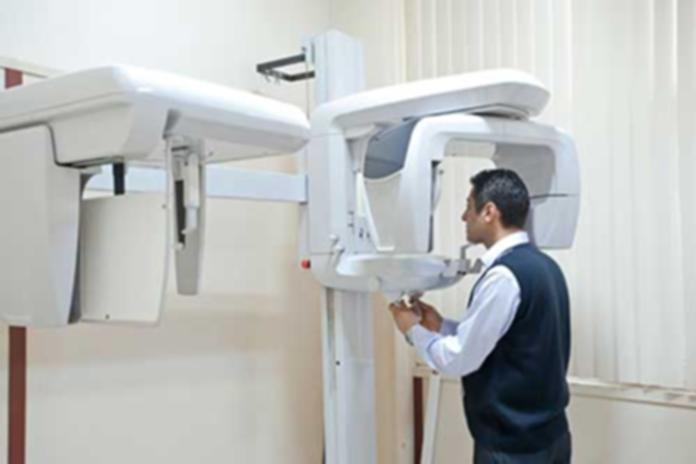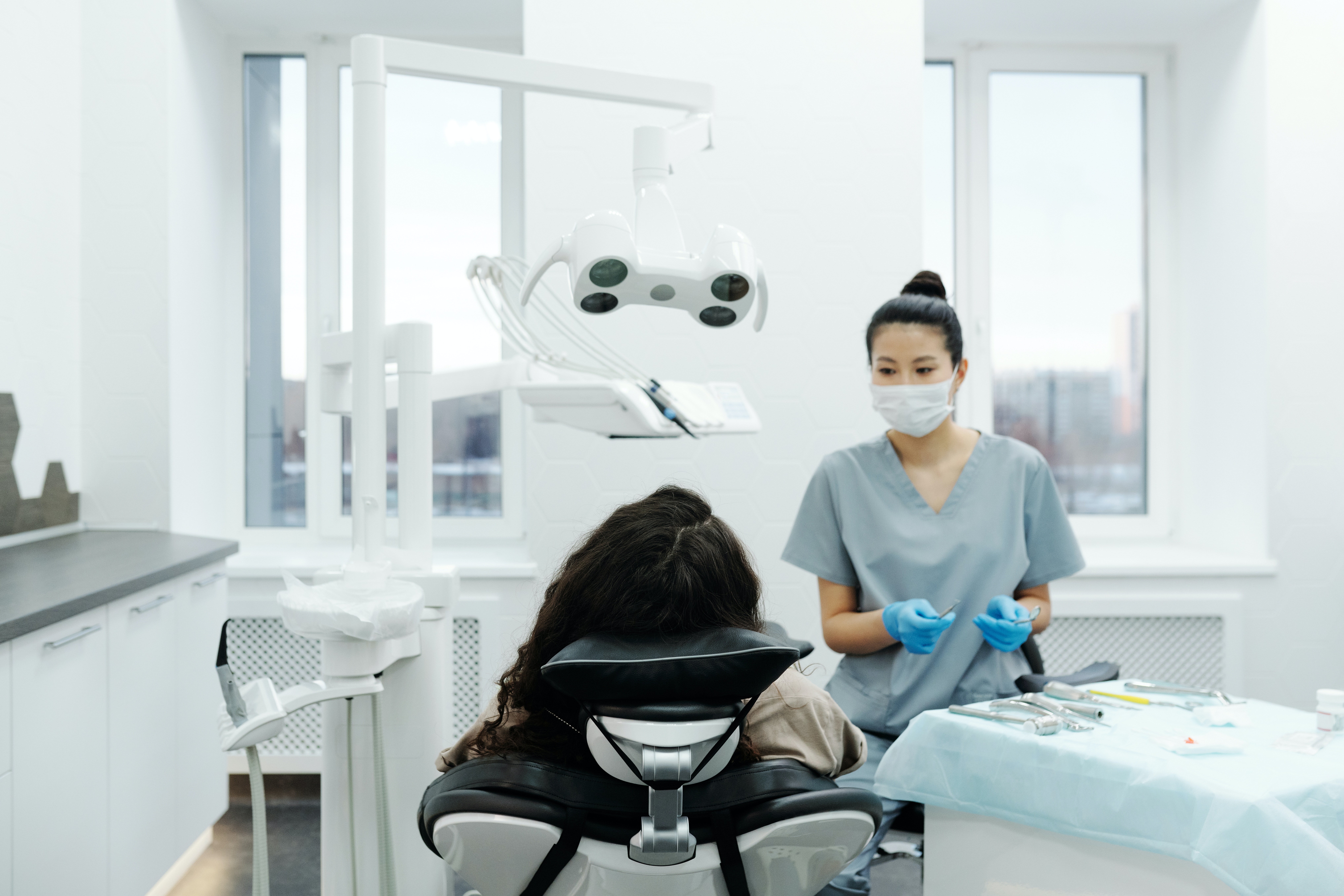Jaw pain, difficulty chewing, or a clicking or locking of the jaw joint are all signs that there might be a problem with the temporomandibular (tem-per-oh-man-DI-byoo-ler) joint, or TMJ. This is the joint that connects the lower jaw, or mandible, to the skull; it can be found in front of the ears on both sides of the head. This joint allows the jaw to open and close, giving one the ability to chew, drink, swallow, speak, sing, and even yawn.
When a problem shows up in the area of the joint, a primary care doctor or dentist can help diagnose a TMJ disorder (also called TMJD). They will come up with a treatment plan or determine whether more specialized or advanced treatment is needed from one of the several types of professionals who deal with TMJD.
Signs of Possible Problems
TMJ problems can show up in overextended or injured jaws, joints, or in the muscles that control chewing, swallowing, or speaking. Among the common symptoms are jaw pain, difficulty chewing, or a clicking or locking of the jaw joint.
The first signs of TMJ problems may not be immediately alarming. Milder symptoms may even clear up on their own. However, continued problems like these should be discussed with a dentist or doctor:
- Jaw, joint, or ear pain
- Headaches
- Ongoing discomfort while chewing or talking
- Persistent discomfort near the ears
Who Can Help with TMJD?

The first step to tackling a TMJ disorder is getting an initial screening and diagnosis. This will indicate what treatment plan is appropriate, and whether the case is severe enough for treatment by a specialist.
Diagnosing a TMJ Disorder
If a patient suspects a problem with his or her TMJ, an initial exam by a primary care doctor or dentist can perform an initial screening. The goal of the screening is to assess the jaw area and diagnose the cause of the problem(s). The exam will likely include:
- A discussion of the actions that bring on the symptoms as well as their frequency.
- Listening and feeling along the jawline as the patient opens and closes their mouth.
- Measuring the TMJ’s range of motion, how wide the jaw can open, and the alignment of the jaw when closed.
- Applying pressure to areas around the jaw to determine painful points or places of discomfort.
If the doctor or dentist thinks there might be a TMJ problem needing further attention, they may also order one or more of the following:
- A dental X-ray to identify problems not found during the initial exam.
- A CT scan to provide detailed images of the TMJ and jawbone structures
- An MRI to uncover any potential problems in the TMJ’s disk or surrounding soft tissue.
- A TMJ arthroscopy procedure, where the doctor inserts a small thin tube into the space, then places a small camera into the tube for a more detailed look at the problem area.
Finding Specialized Treatment
If the problems are severe, linger, or get worse, the doctor or dentist can refer a patient to one of the various specialists who deal with TMJ disorders. Specialized treatment providers include:
- An oral and maxillofacial surgeon, trained to handle a variety of diseases, injuries, and defects of the head, neck, mouth, jaw, and face
- An otolaryngologist, also known as an ear, nose, and throat doctor or ENT specialist
- A dentist specializing in jaw disorders (a prosthodontist, or prosthetic dentist)
Causes of a TMJ Disorder

TMJD is associated with damage or erosion of the joint’s disk or cartilage. The cause is not always easy to detect. Some health conditions contribute to the problem, however. These include:
- arthritis
- other joint deterioration or erosion
- habitual teeth grinding or clenching, known medically as bruxism
- hereditary or genetic problems within the structure of the jaw or TMJ areas
More factors that can lead to TMJ problems are poor posture, prolonged stress, lack of sleep, and an unhealthy diet. The effects of orthodontic braces can also play a role in developing a TMJD.
Broken jaws and other injuries to the head, neck, jaw, or joint are more obvious causes of temporomandibular joint disorder (TMJD), but are also less common.
At-Home and Alternative Options for Treatment
Even before seeking treatment, there are some things that a patient can try at home to reduce the discomfort from TMJ disorders, such as:
- Avoiding sticky or chewy food and chewing gum.
- Eating soft foods or cutting food into smaller pieces.
- Carefully stretching and massaging jaw muscles.
- Applying cold or hot packs to the painful area.
- Try over-the-counter pain relievers like ibuprofen or acetaminophen.
Alternative treatments for managing TMJ pain can also be helpful. They may include practices such as acupuncture, focused relaxation, yoga, meditation, counseling to address stress and anxiety, as well as other forms of therapy or treatment.
These types of alternative treatments are most often provided by practitioners specializing in fields such as acupuncturists, chiropractors, homeopaths, or naturopaths.
However, if symptoms do not clear up, worsen, or include constant or repeated pain in the jaw or ear area, it is time to seek medical help.
Medical Treatment Options for TMJ Disorders

A doctor or dentist may use any of the following treatment methods to treat TMJD.
Non-surgical Options
- Pain relievers and anti-inflammatories: If over-the-counter pain relievers do not help, a doctor or dentist may prescribe stronger pain relievers for a brief time.
- Tricyclic antidepressants: Mostly used for treating depression, these medications are also sometimes used in low doses to help with pain relief, sleeplessness, and for controlling bruxism.
- Muscle relaxants: Sometimes used for a few days or weeks, these medications can help relieve pain, especially when caused in TMJDs by muscle spasms.
Non-drug Therapy Options
- Mouthguards or oral splints: Medically known as occlusal appliances, these soft or firm devices are placed inside the mouth over one’s teeth, often overnight. They provide relief to people dealing with TMJ pain, but it is not yet fully understood why.
- Physical therapy: Exercises to stretch and strengthen jaw muscles, moist heat and ice, or ultrasound procedures may be used.
- Counseling: Counseling and education can help a patient understand the causes of their TMJD better. This may include learning more about behaviors that could trigger increased pain such as teeth clenching or grinding, biting one’s fingernails, or leaning on one’s chin.
TMJD may require a surgical procedure if other treatments fail to eliminate the condition. Be sure to consider each option’s risks, effects, and results, before proceeding.
Surgical Procedures for TMJ Treatment
- Arthrocentesis: This procedure involves inserting small needles into the TMJ which pushes a stream of fluid through the joint to clean out any existing debris or inflammatory byproduct.
- Injections: This is a lesser-used treatment option that injects botulinum toxin type A (known commonly as Botox and other names) into the jaw area, particularly into the muscles used for chewing.
- Arthroscopy: Using a small thin tube placed into the joint space. An arthroscope (camera) is inserted, allowing a surgeon to repair the joint with small surgical instruments.
- Modified condylotomy: A procedure involving surgery on the mandible (the lower jaw), but not in the joint itself. It helps with treating pain, and if there is jaw locking by creating more space for the joint to move.
- Open-joint surgery: This procedure may be necessary if non-invasive, drug, and non-drug treatments have not been successful in alleviating TMJ pain, or if there is a structural issue with the joint. This surgery involves the surgical repair or replacement of the joint itself.
Effective Treatment Takes Special Know-How
Suffering from a TMJ disorder can keep you from enjoying life to its fullest. While the symptoms of a TMJ problem can sometimes clear up on their own, it is important to know where to go if the problems continue. The choice of professional will depend on the cause and severity of the patient’s issue.
If you need help finding a qualified dental professional near you, make an appointment today.


